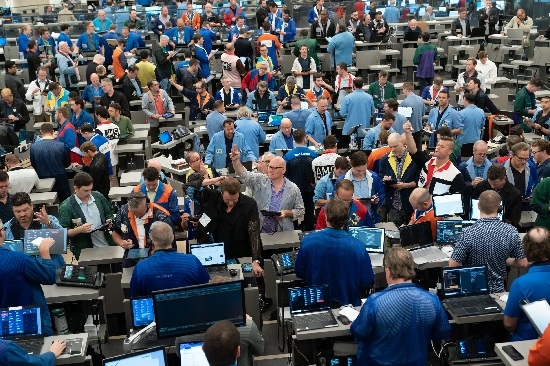Rogue trader loses £3.7bn on Eurex trades

 Jerome Kerviel, the man believed to be responsible for losing Société Générale £3.7bn along with his job and probable freedom, did so by placing around 200,000 one-way trades on Stoxx futures through Eurex, FO Week hs learned.
Jerome Kerviel, the man believed to be responsible for losing Société Générale £3.7bn along with his job and probable freedom, did so by placing around 200,000 one-way trades on Stoxx futures through Eurex, FO Week hs learned.While the exchange declined to comment a source close to Eurex claimed that if the trades were ok with Société Générale, the exchange was merely facilitating the business as it should. It is understood that the 200,000 trades took place over a three to four week period.
Sources at the bank also declined to add further comment to the official statement it released revealing the losses.
When initially announced on January 24 that the bank had been stung by the £3.6bn hit, it said that it discovered it on the weekend commencing January 19. While Société Générale did not reveal that the name of the trader, it did say that the losses were incurred through derivatives trading on an unspecified European equity index.
One trader, responsible for plain vanilla futures hedging on European equity market indices, had taken massive fraudulent directional positions in 2007 and 2008 beyond his limited authority, read a statement from the bank.
Early market speculation claimed that the trades were more likely to be OTC, given that an exchange or clearing house would have been alerted to such vast trades. As the day moved on, it was revealed to FO Week, that it was in fact Eurex that had been the platform for the trades.
Given that Kerviel, a 31 year old trader employed on £75,000 a year, amassed such losses it is likely that he will face a lengthy jail sentence sources have speculated. The bank has said that it will look to take legal action against the trader. Calls to Paris police stations went unanswered.
Nick Leeson served six and a half years following his conviction in 1995.
I am sure that the authorities will not go lightly on this. They are probably looking for a hole deep enough on Devils Island to throw him down, said one observer.
Another source said he was amazed that something so large as this would get through without being noticed. I cant believe that a banks systems would have been so poor as to allow such a huge position to be piled up. You would think that the exchange and clearinghouse would have spotted it and checked that all was OK. And did they not have nobody else in the middle or back office who could see what was going on?
A third observer said he couldnt understand what Kerveil was intending to do. Was it a strategy that went wrong? Was it a fat finger? It appears an odd position to take. Especially as it was vanilla and not complex straddles as Leeson made, he said.
While Société Générale did not reveal too many details of the circumstances of the trading losses; the French bank did say that the trader had experience working in a middle office environment, which had been critical in his attempts to cover his loses.
Aided by his in-depth knowledge of the control procedures resulting from his former employment in the middle office, he managed to conceal these positions through a scheme of elaborate fictitious transactions, the statement read.
The case has strong echoes to, but dwarves in comparison, the trading losses of Nick Leeson, who was responsible for the collapse of Barings Bank after he incurred losses of £725m in 1995.
The French bank stressed that the losses will be covered through a capital increase of 5.5bn.
The news, coupled with the further sub-prime write-offs, caused the stock price of Société Générale to plummet, causing a temporary suspension of trading.
In wake of the news, Daniel Bouton, the bank chairman offered to resign but the board rejected his gesture.
Despite these losses the bank has said it expects to reveal for 2007 of between e600-e800m.
Found this useful?
Take a complimentary trial of the FOW Marketing Intelligence Platform – the comprehensive source of news and analysis across the buy- and sell- side.
Gain access to:
- A single source of in-depth news, insight and analysis across Asset Management, Securities Finance, Custody, Fund Services and Derivatives
- Our interactive database, optimized to enable you to summarise data and build graphs outlining market activity
- Exclusive whitepapers, supplements and industry analysis curated and published by Futures & Options World
- Breaking news, daily and weekly alerts on the markets most relevant to you



